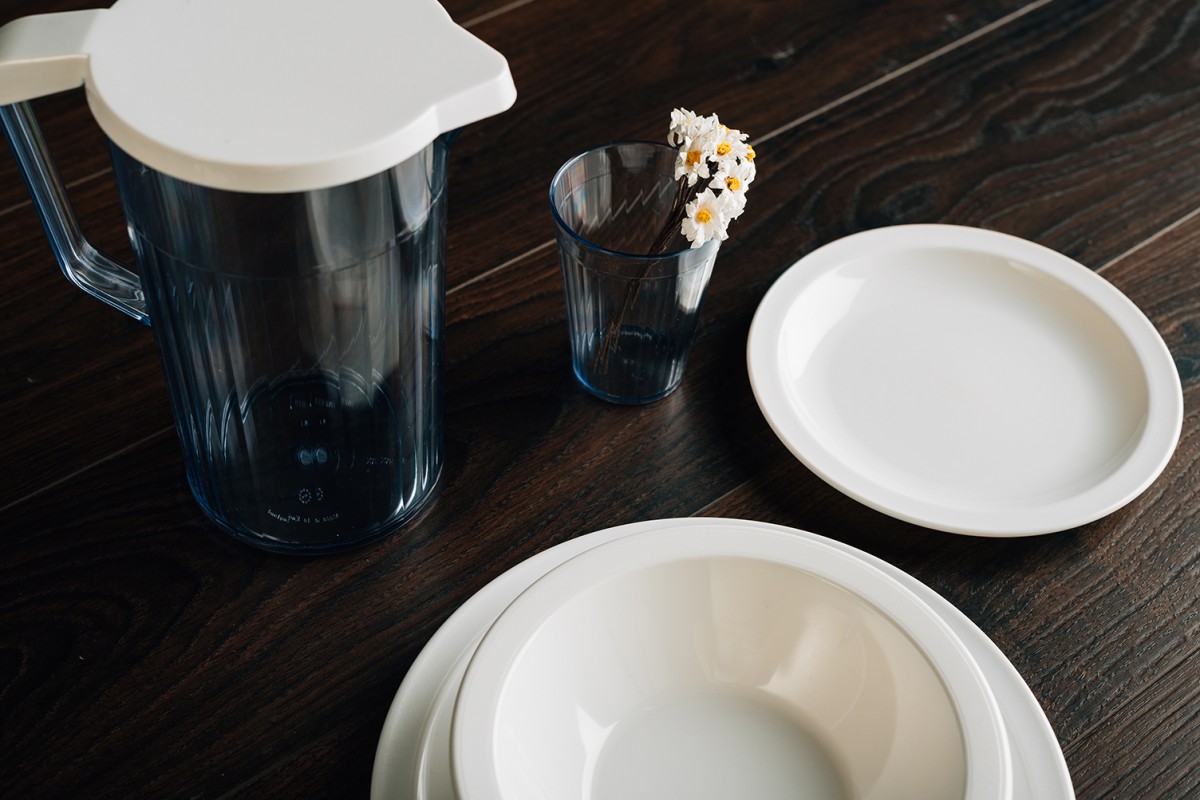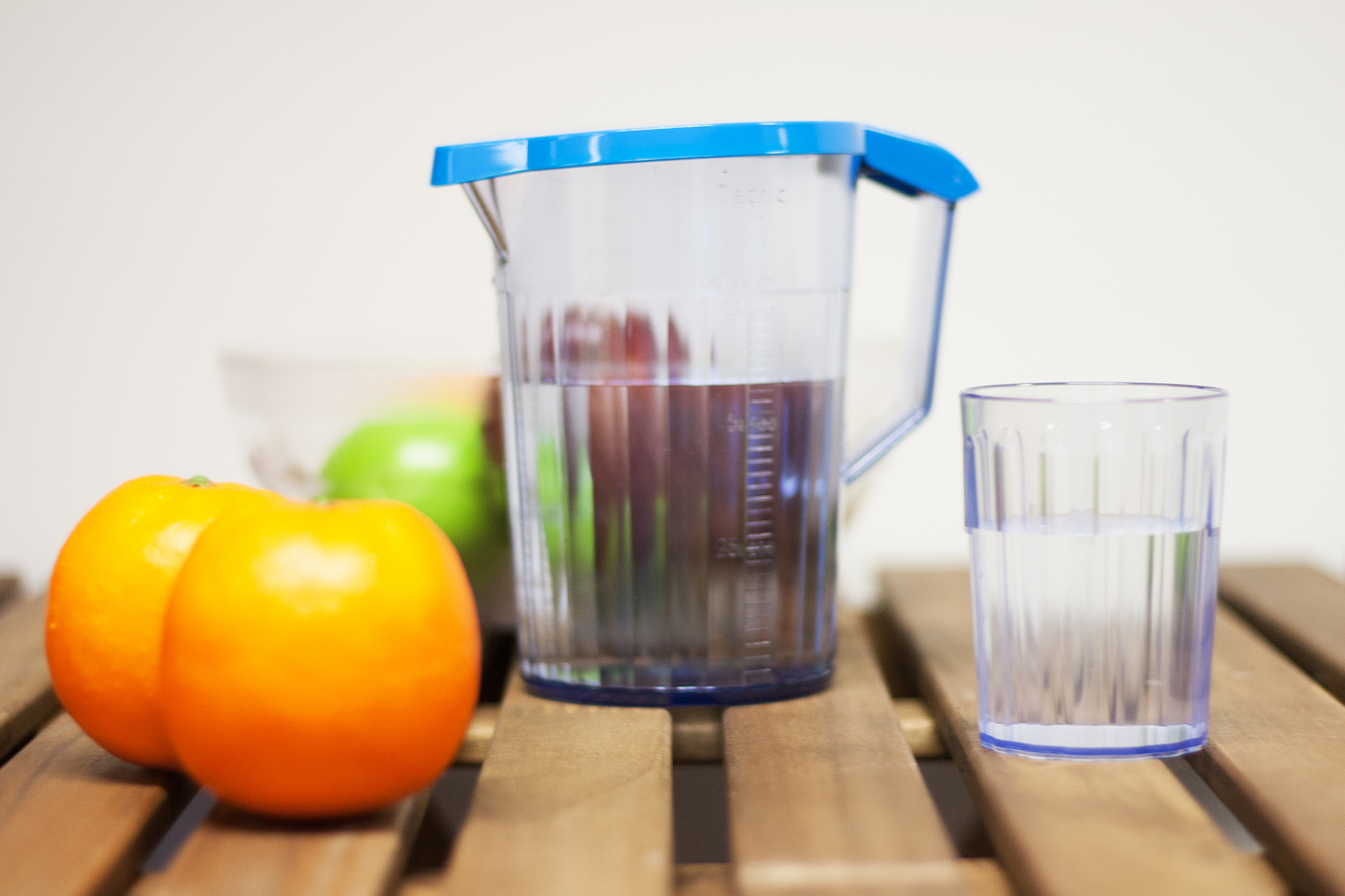The Future of Care Home Dining with Antimicrobial Tableware

In recent years, more so since the pandemic, hygiene has become of paramount concern, especially in healthcare environments including care homes where vulnerable populations reside. Part of this hygienic revolution is antimicrobial tableware, a technology plays a crucial role in reducing microbial contamination improving hygiene.
Understanding Antimicrobial Technology
So, what is antimicrobial technology? Firstly, it’s important to understand the distinction between antimicrobial and antibacterial technologies. While antibacterial technology specifically targets and eliminates bacteria, antimicrobial additives have a broader spectrum of action and combat bacteria, viruses, and fungi. This makes antimicrobial technology particularly effective in settings where a diverse range of pathogens are a concern.
The application of antimicrobial technology extends across many sectors, with the overarching objective being to create environments and products that remain hygienic through antimicrobial product protection.
At the forefront of antimicrobial technology is the use of silver ions, renowned for their antimicrobial properties since ancient times. Silver ions, or Ag+, serve as the active agents in this technology, disrupting microbial growth and reproduction.
How Antimicrobial Tableware Works
Antimicrobial tableware incorporates additives that inhibit the growth and survival of microorganisms. These additives disrupt the cellular processes of the bacteria, rendering them inactive. The integration of these additives during the manufacturing process ensures that the antimicrobial properties are long-lasting and do not leach or diminish over time.
Benefits of Antimicrobial Tableware in Care Homes
1. Enhanced Hygiene:
The primary benefit of antimicrobial tableware is its ability to reduce microbial load on surfaces. By minimising the presence of bacteria and other microorganisms, antimicrobial tableware ensures that dining surfaces remain more hygienic. This reduction of microbes contributes to maintaining high standards of hygiene, which is essential for daily dining routines.
2. Longevity and Durability:
Antimicrobial tableware is designed to withstand frequent washing and handling, maintaining its protective properties throughout its lifespan. This durability ensures that the antimicrobial effectiveness is not diminished over time, even with regular use and cleaning. The robust construction of antimicrobial tableware makes it a reliable choice for care homes, where items are used daily and must endure rigorous cleaning processes. Additionally, this durability makes it a cost-effective investment for care homes, as it reduces the need for frequent replacements. By choosing antimicrobial tableware, care homes can ensure long-term performance and reliability, contributing to both economic efficiency and sustained hygiene standards.
3. Improved Resident Confidence:
Knowing that their tableware is protected against microorganisms can boost the confidence of residents and their families. This assurance can lead to a better dining experience and overall satisfaction with the care facility. When residents and their loved ones are confident in the hygiene of the dining environment, it fosters a sense of well-being and peace of mind. This enhanced confidence can improve the overall atmosphere of the care facility, promoting a positive and comfortable dining setting. Families are more likely to feel reassured about the care their loved ones are receiving, which can strengthen trust and satisfaction with the facility’s services. Additionally, the knowledge that the care home prioritises hygiene measures can be a key factor in the decision-making process for potential residents and their families, highlighting the facility’s commitment to maintaining a high standard of care.
4. Cost-Effective in the Long Run:
While antimicrobial tableware may sometimes have a higher initial cost, the long-term benefits outweigh the expenses. The durability of antimicrobial tableware means it can withstand frequent washing and handling without degradation. This longevity reduces the need for frequent replacements, leading to significant cost savings over time. Furthermore, investing in antimicrobial tableware can enhance the overall hygiene standards of the facility, potentially reducing costs related to cleaning and maintenance. By prioritising high-quality, durable tableware, care homes can ensure a more hygienic environment while also achieving long-term financial benefits. This makes antimicrobial tableware a financially sound investment, providing advantages that far surpass the initial expenditure.
5. Environmental Impact:
Many antimicrobial tableware products are designed to be environmentally friendly, aligning with the growing emphasis on sustainability. These products are often made from recyclable materials, which helps reduce the demand for new raw materials and minimises the overall environmental footprint. By opting for tableware that can be recycled at the end of its lifecycle, care homes contribute to a circular economy, where resources are reused and repurposed rather than discarded.
The longevity of antimicrobial tableware also plays a crucial role in reducing waste. Unlike disposable or lower-quality alternatives that require frequent replacement, durable antimicrobial tableware remains in use for a longer period, significantly decreasing the amount of waste generated. This reduction in waste not only lowers the burden on landfills but also lessens the environmental impact associated with the production, transportation, and disposal of single-use items. Care homes adopting such sustainable practices can enhance their environmental stewardship, contributing to broader efforts to combat climate change and environmental degradation.
Incorporating environmentally friendly antimicrobial tableware into daily operations reflects a commitment to sustainable living and can enhance the facility’s reputation. Residents and their families are increasingly aware of and concerned about environmental issues. By demonstrating a commitment to sustainability, care homes can appeal to environmentally conscious individuals, showcasing their dedication to responsible and ethical practices.
Harfield Tableware in UK Care Homes

Harfield Tableware, a leading manufacturer of antimicrobial tableware, has successfully implemented its products in care homes across the UK, contributing to a more hygienic dining environment. The introduction of Harfield Tableware’s antimicrobial products leads to a reduction in microbial contamination on dining surfaces. The consistent use of antimicrobial tableware has not only improved cleanliness but also streamlined cleaning processes, making it easier to maintain high standards of hygiene.
Moreover, the residents and their families can have increased confidence in the care provided, knowing that additional measures are in place to protect against bacteria. This confidence can have a positive impact on the overall dining experience, encouraging more residents to participate in communal meals and social activities. Families can feel reassured that their loved ones are dining in a cleaner environment.
The success of Harfield’s antimicrobial tableware demonstrates how innovative solutions can address specific hygiene challenges in care environments.
The Technology Behind Antimicrobial Tableware
Antimicrobial tableware owes its efficacy to advanced silver ion technology, a cutting-edge approach that has revolutionised the way we think about hygiene in everyday objects. This technology is particularly relevant in care homes, where maintaining the highest standards of hygiene is important. Silver ion technology, used in antimicrobial tableware, provides continuous, long-lasting product protection against a wide range of harmful microorganisms, ensuring that tableware remains hygienic between regular cleanings.
How Silver Ion Technology Works
Silver ion technology functions by embedding silver ions into the material of the tableware during manufacture. Silver, a metal known for its antimicrobial properties for centuries, has the ability to disrupt the vital processes of bacterial cells. When bacteria come into contact with surfaces treated with silver ions, the ions interact with the bacterial cell membrane, leading to a series of reactions that inhibit the cell’s ability to function and reproduce.
Here’s a closer look at the mechanisms by which silver ions exert their antimicrobial effects:
- Disruption of Cell Membranes: Silver ions can attach to the bacterial cell wall and cell membrane, disrupting their structure and increasing their permeability. This disruption leads to the leakage of essential cellular components, ultimately causing the death of the bacterial cell.
- Interference with Enzymatic Activity: Silver ions can bind to enzymes and proteins within the bacterial cell, disrupting critical enzymatic functions. These enzymes are essential for bacterial metabolism and replication, and their inhibition prevents the bacteria from growing and dividing.
- Inhibition of DNA Replication: Silver ions have the ability to interact with the bacterial DNA, preventing its replication. Without the ability to replicate, the bacterial cells cannot reproduce and spread, effectively halting the growth of bacterial populations on the treated surfaces.
- Production of Reactive Oxygen Species (ROS): Silver ions can catalyse the production of reactive oxygen species within bacterial cells. These ROS are highly reactive and can damage cellular components, including proteins, lipids, and DNA, leading to cell death.
Advantages of Silver Ion Technology
The integration of silver ion technology into antimicrobial tableware offers several distinct advantages, making it an ideal solution for care homes:
- Continuous Product Protection: Unlike surface treatments that can wear off over time, silver ion technology is embedded within the material itself. This means that the antimicrobial properties remain active for the lifetime of the product, providing continuous product protection against microbial contamination.
- Broad-Spectrum Efficacy: Silver ions are effective against a wide range of microorganisms, including bacteria, fungi, and some viruses. This broad-spectrum efficacy ensures comprehensive product protection against various pathogens.
- Food Contact Safe: Silver ion technology is safe for use in food contact materials. The amount of silver used in these products is carefully controlled to ensure it is effective against microbes while remaining safe for human use.
- Cost-Effectiveness: While antimicrobial tableware may have a higher initial cost compared to traditional tableware, the long-term benefits include decreased need for replacements, make it a cost-effective investment for care homes.
Educational Programs
To maximise the benefits of antimicrobial technology, care homes are increasingly implementing educational programs for staff and residents. These programs focus on proper usage, cleaning protocols, and the importance of maintaining hygiene standards. By raising awareness and providing training, care homes can ensure that everyone understands the role of antimicrobial technology in infection control.
Educational initiatives can also extend to families and visitors, helping them understand the measures in place within the care home. This transparency can build trust and confidence in the care home’s commitment to enhanced hygiene.
Conclusion
Antimicrobial tableware is a transformative innovation in the realm of care home dining. By providing comprehensive product protection against a wide range of microorganisms, it significantly enhances hygiene standards. As technology continues to advance, the potential applications and benefits of antimicrobial tableware will only grow, paving the way for a more hygienic future in care homes.
The integration of sustainable materials, and increasingly more personalised solutions will further elevate the effectiveness and appeal of antimicrobial tableware. Educational programs will ensure that these benefits are fully realised, creating a culture of hygiene in care homes.
In conclusion, antimicrobial tableware is not just a product; it is a critical component of modern healthcare practices that can revolutionise the dining experience in care homes. By prioritising great hygiene, care homes can provide a more comfortable environment for residents and staff alike.
Find out more about Harfield Tableware HERE
What Next?
🔗 Follow us on Social Media, here is our LINK TREE
✉️ See how our additive technology can benefit your business by CONTACTING US
🦠 Find out more about Biomaster Antimicrobial Technology HERE
🎥 Watch our video on how Biomaster works WATCH NOW
📰 Subscribe to our Newsletter - SUBSCRIBE
← Back to blog



